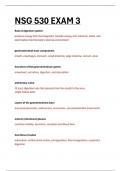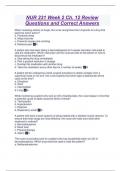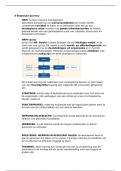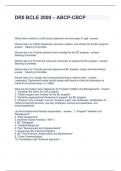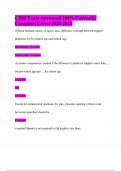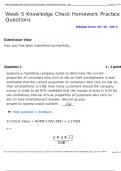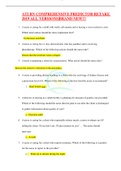Tentamen (uitwerkingen)
NSG 530 / NSG530 EXAM 3. QUESTIONS WITH 100% CORRECT ANSWERS.
- Vak
- Instelling
Syphilis an STD that attacks many parts of the body and is caused by a small bacterium called a spirochete Chlamydia A sexually transmitted disease, the most common in developed countries, caused by the bacterium Chlamydia trachomatis. Often producing no symptoms, it can cause infertili...
[Meer zien]
